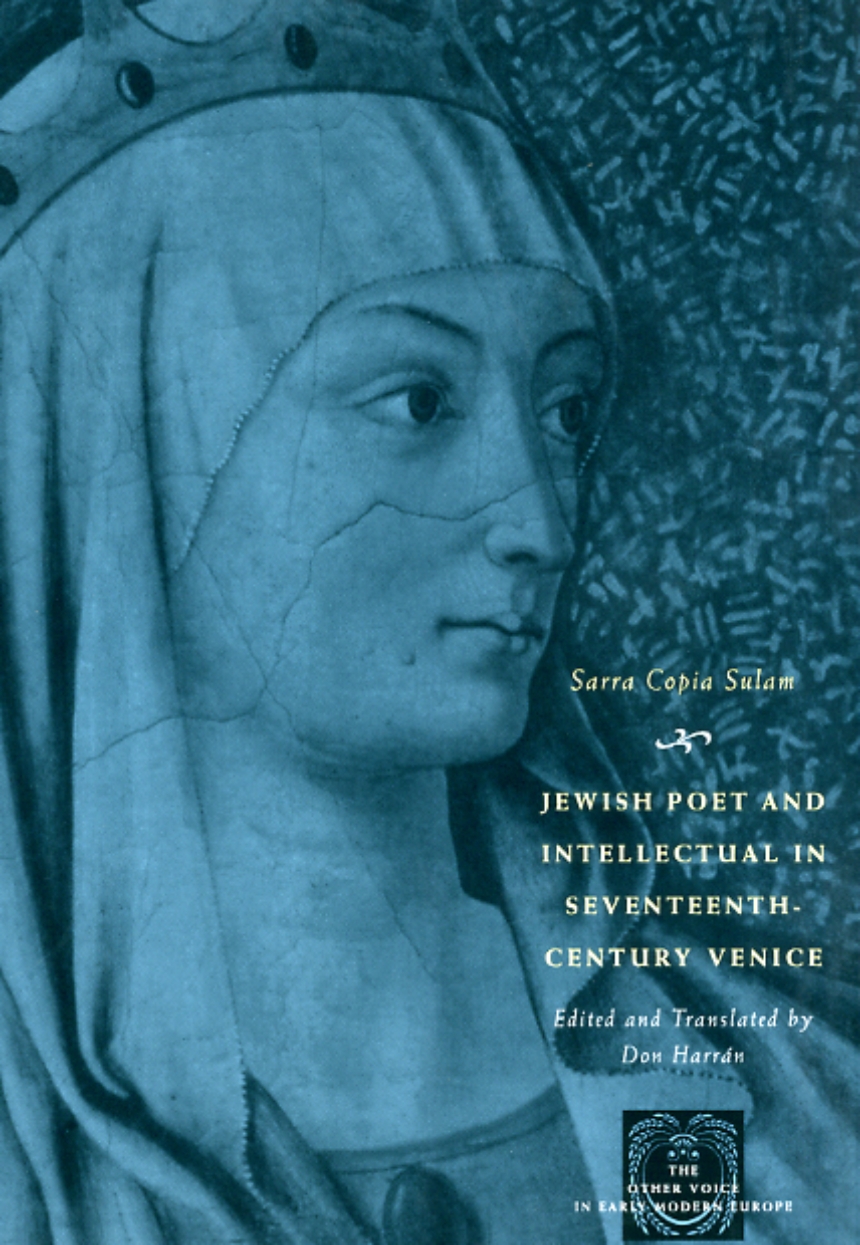Jewish Poet and Intellectual in Seventeenth-Century Venice
The Works of Sarra Copia Sulam in Verse and Prose Along with Writings of Her Contemporaries in Her Praise, Condemnation, or Defense
Jewish Poet and Intellectual in Seventeenth-Century Venice
The Works of Sarra Copia Sulam in Verse and Prose Along with Writings of Her Contemporaries in Her Praise, Condemnation, or Defense
The first Jewish woman to leave her mark as a writer and intellectual, Sarra Copia Sulam (1600?–41) was doubly tainted in the eyes of early modern society by her religion and her gender. This remarkable woman, who until now has been relatively neglected by modern scholarship, was a unique figure in Italian cultural life, opening her home, in the Venetian ghetto, to Jews and Christians alike as a literary salon.
For this bilingual edition, Don Harrán has collected all of Sulam’s previously scattered writings—letters, sonnets, a Manifesto—into a single volume. Harrán has also assembled all extant correspondence and poetry that was addressed to Sulam, as well as all known contemporary references to her, making them available to Anglophone readers for the first time. Featuring rich biographical and historical notes that place Sulam in her cultural context, this volume will provide readers with insight into the thought and creativity of a woman who dared to express herself in the male-dominated, overwhelmingly Catholic Venice of her time.
632 pages | 12 halftones | 6 x 9 | © 2009
The Other Voice in Early Modern Europe
History: European History
Literature and Literary Criticism: Romance Languages
Religion: Christianity, Judaism
Reviews
Table of Contents
List of Illustrations
Acknowledgments
List of Abbreviations
Series Editors’ Introduction
Volume Editor’s Introduction
Volume Editor’s Bibliography
I Sarra Copia and Ansaldo Cebà
1. Letters to Sarra Copiafrom her Christian Correspondent Ansaldo Cebà (1618–22)
2. Letter from Sarra Copia to Isabella della Tolfa (1623)
3. References to Sarra Copia in a Second Collection of Ansaldo Cebà’s Letters (1623)
II A Controversy on the Immortality of the Soul
1. Letter from Baldassare Bonifaccio to Sarra Copia (End of 1619)
2. Sarra Copia’s Letter in Response (10 January 1620)
3. Excerpts from Baldassare Bonifaccio’s “Discourse on the Immortality of the Soul” (June 1621)
4. Sarra Copia’s Manifesto in Self-Defense (July 1621)
5. Baldassare Bonifaccio’s Essay in Rebuttal (August 1621)
6. Portion of a Letter by Baldassare Bonifaccio (December 1621)
III “Notices from Parnassus”
1. “Notices from Parnassus” (1626 or Thereafter)
2. Excerpts from Numidio Paluzzi’s Rime, as Edited by Alessandro Berardelli (1626)
3. Letter by Angelico Aprosio (Undated, Though Based on a Report from 1637)
IV Miscellanea
1. Dedication to Sarra Copia from Leon Modena’s Play Ester (1619)
2. Two Poems by Gabriele Zinano and a Poemby Sarra Copia in Response (Probably 1622–23)
3. Leon Modena’s Epitaph for Sarra Copia’s Tombstone (1641)
Appendix: Sarra Copia’s Prose Writings in the Original
Series Editors’ Bibliography
Index of Poems by Their First Lines, Forms, and Authors
